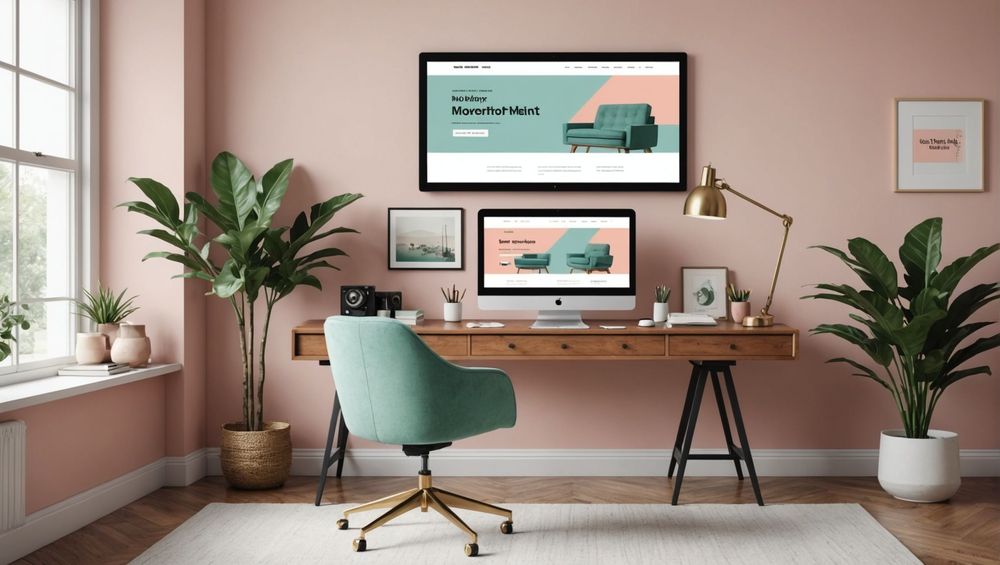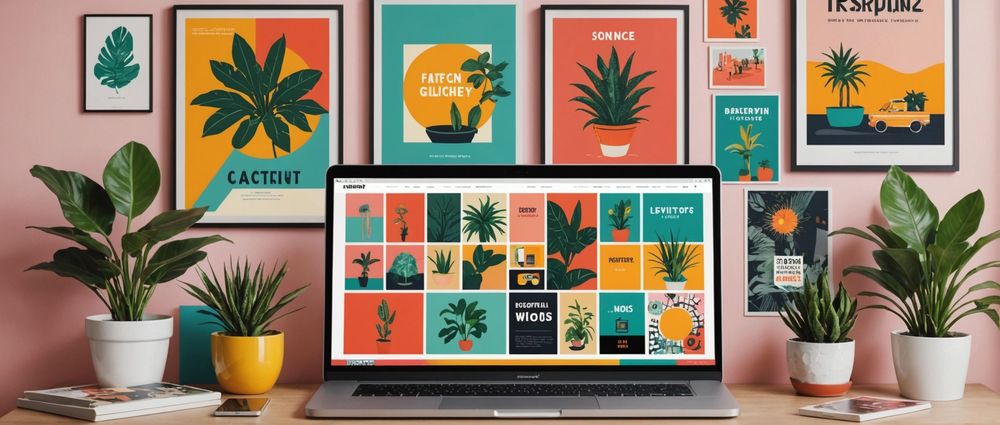Retro website design has made a tremendous comeback in recent years, capturing the charm and uniqueness of past eras. This article delves into notable examples of retro website design, offering inspiration and guiding you on how to craft your own vintage-inspired site.
The Appeal of Retro Website Design

Retro website design is more than just nostalgia; it’s about invoking the essence of past decades through visual elements. This approach taps into users’ desire for simpler times while providing a unique and memorable browsing experience.
Typography is a key factor in retro design, with fonts that echo the styles of the ’70s, ’80s, and ’90s. Color schemes also play a crucial role, often featuring bright, bold hues that stand out. Lastly, authentic graphics and patterns are essential in solidifying a retro aesthetic. These elements combined can transport users back in time, creating an engaging and delightful experience.
Notable Retro Website Design Examples

Let’s explore some exemplary retro website designs that have successfully merged nostalgia with modern functionality:
1.
Spaceage.in
- Captures the futuristic optimism of the 1950s and 60s.
- Uses classic space-themed icons and illustrations.
- Balanced blend of modern usability with retro style.
2.
FilmNoirCollection.com
- Evokes the dark, moody vibes of the 1940s Film Noir era.
- Features monochromatic color schemes and grainy textures.
- Utilizes period-specific fonts and cinematic layouts.
3.
MiamiViceStyled.com
- Recreates the flashy, vibrant aesthetic of the 1980s.
- Neon colors, gradients, and pixelated graphics.
- Web design reflecting the cultural extravagance of the era.
Key Elements of Retro Website Design

To craft a retro website design, incorporate the following elements:
Typography:
Opt for fonts that reflect the chosen era. Whether it’s cursive, typewriter-style, or bold block letters, the right typeface can set the tone for your design.
Color Schemes:
Use color palettes that complement the nostalgic vibe you aim to achieve. For instance, pastel colors for a ’50s feel or neon hues for an ’80s touch.
Graphics and Patterns:
Integrate patterns such as polka dots, stripes, and plaid. Use era-specific icons and illustrations to enhance the nostalgic effect.
Interface Design:
Retain modern usability while incorporating retro visuals. Ensure that navigation is intuitive and that the user experience remains contemporary.
Step-by-Step Guide to Creating Your Own Retro Website
Creating your own retro website involves several steps to ensure an authentic and functional design:
Research and Inspiration:
Study various retro designs and pinpoint the era you want to emulate. Gather inspiration from a range of sources, including old magazines, advertisements, and films.
Choose the Right Tools:
Utilize design tools that offer a wide array of retro templates, fonts, and graphics. Tools like Adobe Photoshop, Illustrator, and Canva are excellent starting points.
Design Mockups:
Create initial mockups to visualize the layout and elements of your website. Focus on typography, color schemes, and iconography that reflect the retro era.
Develop the Website:
Using your mockups as guides, start building your website. Ensure that you balance retro aesthetics with modern functionalities such as responsive design and fast loading times.
Testing and Refinement:
Test your website across various devices and browsers to ensure compatibility. Gather user feedback and make necessary refinements to enhance both design and usability.
Tips for Authentic Retro Design
For an authentic retro design, consider these tips:
Consistent Theme:
Maintain consistency in your theme by sticking to a specific era’s design elements. Mixing too many styles can confuse the intended nostalgia.
High-Quality Graphics:
Use high-resolution images and icons to avoid pixelation, which can detract from the design quality.
User Experience:
Prioritize user experience by ensuring that the retro design does not impede navigation. Keep the interface user-friendly and accessible.
Conclusion
Retro website design is a powerful tool for creating memorable and engaging online experiences. By drawing inspiration from notable examples and following a strategic design process, you can craft a website that brilliantly combines vintage charm with modern usability. Embrace the past to captivate your audience today!
FAQ
1. What makes a website design “retro”?
A retro website design incorporates styles, fonts, colors, and graphics from past decades, often evoking a sense of nostalgia and familiarity.
2. Which era’s design is the most popular for retro websites?
The 1980s and 1990s are particularly popular for retro website designs due to their distinctive and bold aesthetics, including neon colors and pixelated graphics.
3. Can I mix elements from different decades in my retro design?
While it is possible, it is generally advised to stick to one era to maintain a cohesive and clear thematic design. Mixing too many styles may confuse the user experience.
4. How do I ensure my retro website is still user-friendly?
Ensure that the retro design elements do not compromise the website’s navigation and usability. Incorporating modern practices like responsive design and intuitive interfaces is key.
5. What tools are best for creating retro website designs?
Adobe Photoshop, Illustrator, and Canva are excellent tools for designing retro websites. They offer a range of templates, fonts, and graphics suitable for various retro themes.


